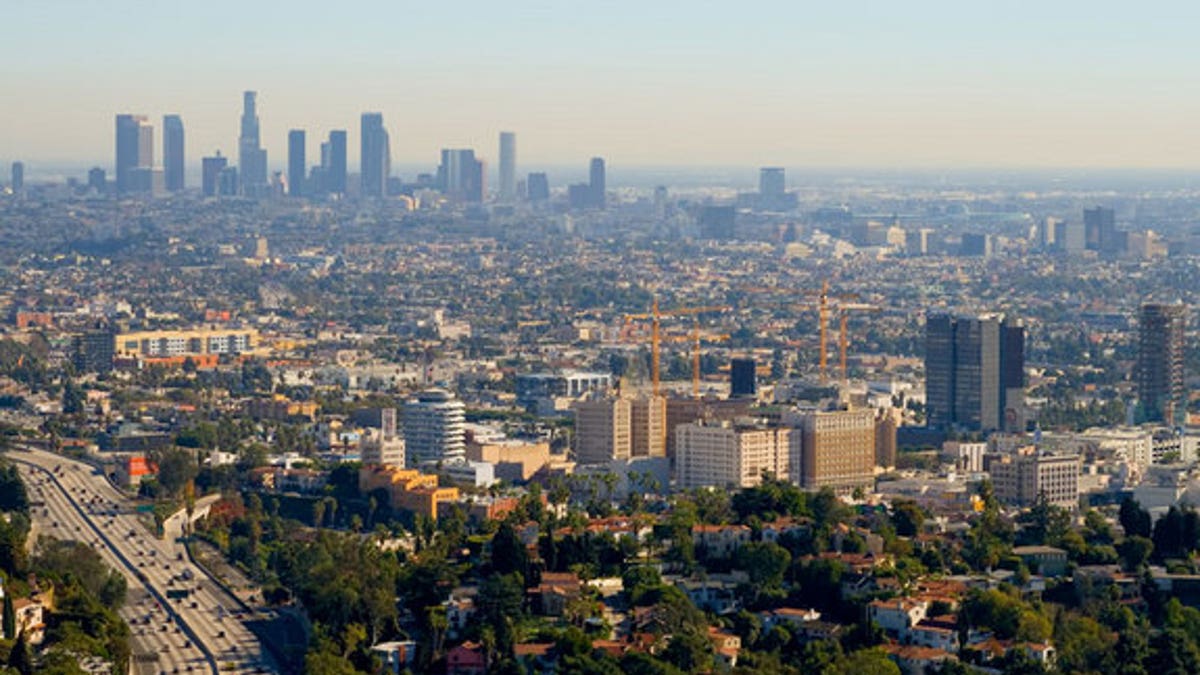
The skyline of Los Angeles with a layer of smog hanging over the city. (Los Angeles smog image via Shutterstock)
High levels of ozone a major component of smog may increase the risk of a burst appendix, according to a new study from Canada.
Researchers found that people's risk of a burst appendix rose by 22 percent with every 16-part-per-billion increase inozone levels over the previous seven days. Ozone levels typically ranges between 0 ppb on good air quality days, to more than 300 ppb on days considered to have a "very unhealthy" air quality index.
The finding means the increased risk is significant but modest, said study researcher Dr. Gilaad Kaplan, a gastroenterologist at the University of Calgary. "The effect size suggests that air pollution isn't the only factor, though it may be one piece of the puzzle."
About one in 15 people will develop appendicitis over the course of their lifetime, according to the researchers. Patients with appendicitis can experience an inflamed appendix or a burst one, which doctors refer to as a perforated appendix.
The same researchers reported an association between air pollution and appendicitis in a 2009 study of about 5,000 people in Calgary[S2].
In the new study, researchers looked at more than 35,000 people hospitalized for appendicitis across 12 Canadian cities between 2004 and 2008. On average, the patients were 30 years old at diagnosis. The researchers calculated average concentrations of ozone for each city during the week before each patient was hospitalized with appendicitis.
A number of ozone sources, including fossil fuel combustion, electricity generation and industrial activity, can contribute to levels of the air pollutant. Because it is created when pollutants from these sources interact with sunlight in the atmosphere, ozone levels in many regions tend to be higher in the summer months.
The study found no significant association between ozone levels and risk of inflamed (but not perforated) appendix.
"This study highlights a previously unrecognized association between air pollution and an increased risk of perforated appendicitis, said Dr. Robert Glatter, emergency physician at Lenox Hill Hospital in New York. Glatter was not involved in the current study.
While the researchers accounted for known appendicitis risk factors, such as age and sex (appendicitis is most commonly diagnosed in younger people and men), they cannot say whether some other factor for which they did not account may have influenced the results.
For instance, ozone was measured only at a regional level. People could have been exposed to more or less pollution depending on their habits, travel patterns and the amount of time spent outdoors each day.
While the study presents "an interesting association, more research is needed before recommendations can be made," Glatter said.
The researchers said it isn't clear exactly how air pollution may increase the risk of a burst appendix. It is possible that exposure to air pollution could increase inflammation in people already starting to develop appendicitis. One study in mice suggested that exposure to air pollutants may alter levels of intestinal microbes that help maintain a healthy gut, which could leave the digestive tract more prone to infection.
The major risk factor for a burst appendix is a delay in diagnosis. Most cases present as abdominal pain that worsens over 24 to 36 hours, though some cases of ruptured appendix happen very quickly with little warning.
A burst appendix is a medical emergency requiring immediate abdominal surgery, Kaplan said.
Copyright 2013 LiveScience, a TechMediaNetwork company. All rights reserved. This material may not be published, broadcast, rewritten or redistributed.
